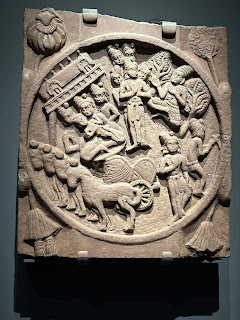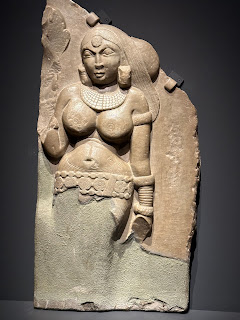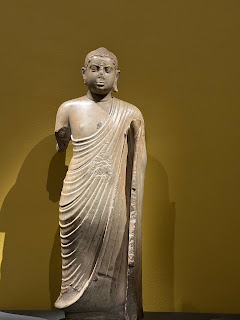Goodbye Deepak!
We lost former Frank Anthony School head boy, Deepak Kochhar, who passed away in New Delhi, December 5. A few decades ago — when we were all bright-eyed and bushy-tailed high school students at Frank Anthony’s — Deepak was this tall, easy-on-the-eye young man who excelled in sports and was popular with both students and teachers, never mind the young girls crushing on him!
His sudden passing is a reminder of one’s mortality and all those discomfiting thoughts we push to the back of our mind: death is looming for us all, perhaps not that far away!
It struck me that Deepak’s passing is the first in many decades of a classmate. I recall others who died but that happened a long time ago when we still lived in India. There have been no passings in a while — hence the shock!
In 2014, when Lorna and I went to the first of many FAPS reunions, we were so happy to see Deepak and his wife Anita. I still remember Anita (also tall and imposing) striding ahead into the Dhaula Kuan Officers Club, closely followed by Deepak, calling out, “where is Lorna, where is Ludi? I’ve heard so much about them from Deepak!”
We were of course touched that Deepak had remembered and spoken of us! We visited them at their Greater Kailash 2 home and it was lovely to meet Anita’s mother and father who were both at the time in their late 90s (but now sadly passed).
On the next trip to India in 2016, he’d just had eye surgery and couldn’t make it to any of the parties but insisted we meet him at home. We had a great time exchanging news of classmates and checking out his historic black and white pictures of high school!
The next time we met was in November 2017. He attended the reunion organized by former head girl Anupama Miglani Singh at the 5th Maratha Officers’ Mess. It was great fun to hear Deepak recall old times and talk about how he gave his blessings to next head boy and best friend, Raghu Rajendran, while opposing other less worthy candidates and how proud he was of Anu and the rest of us prefects for standing up to the faculty and supporting him! It was all accompanied by much backslapping, bonhomie, and loud cheering from fellow students — a spirit one can only recapture with childhood friends!
For those unaware of the details, Deepak lost his Frank Anthony head boy-ship over a kissing incident that got blown out of proportion! (I did say kissing; those were more innocent times)! But he remained in high school, sat his Senior Cambridge finals, and graduated with the rest of us.
I recall this wonderful afternoon party at his home (December 2017). It was outdoors under the fruit trees (jamun, mango, and maybe custard apple) in his back yard. It was a typical Delhi winter afternoon with balmy temps, almost clear skies, light breeze, the sun warming our backs! The food (bajre ki roti, sarson ka saag, moong daal halva) was excellent, and the drinks were flowing! He’d hired a Goan DJ (Edwin Fernandes) and a group of us — along with son Samir, daughter Diya, and Deepak’s brother Rajesh — were singing 70s pop songs (English and Bollywood)!
That was the last time I saw Deepak in person. But he always kept in touch. He would ring every now and again to catch up and give us updates on his actor son Sam whom he was so proud of or send pictures of his grandkids!
He also reached out to pay his respects to our Hindi teacher Mr Raj (based in New Jersey) who has lived in the U.S. for more than 40 years and is perhaps the only one of his generation still with us!
Deepak was always fun to be with, the life and soul of the party! Farewell, dear classmate! You will be missed!
Ludi Joseph
New York
December 8, 2023
Note: Head Boys, Head Girls, and Prefects (unheard of in America except in Harry Potter books and films!) are typical British public school constructs, modeled on Eton and Harrow, a leftover from the Raj! Both Lorna and I were proud to be FAPS Prefects!
Our school was founded by Frank Anthony, Anglo Indian leader at the time of Indian Independence. The several schools bearing his name are well known in India for maintaining a high standard of English medium education.
 |
| 2017: Deepak and I at the FAPS reunion |
 |
| 2014: Anita, Deepak, Lorna |
 |
| 2014: Moi, Deepak, Lorna |
 |
| 2017: Rajesh, Sam, Edwin (the DJ) |
 |
| 2017: Diya with Deepak’s mother, now 95 |
 | ||
School Cricket 11. Deepak in the middle at the back
|
 |
| 2017: Deepak with Anita, Raghu, Anu |
 |
| 2017: Deepak and I at his house party |





















